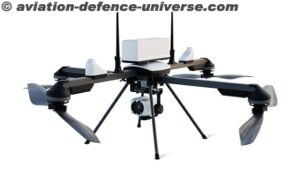
New Delhi. 28 June 2021. Grene Robotics has designed and developed India’s first 100% indigenous Unified, Distributed and wide-area Autonomous Drone Defence Dome called Indrajaal. Indrajaal will protect a large area of 1000-2000 sq. km per system against threats such as UAV’s, Incoming Weapons, Loitering Munitions, Low-RCS targets autonomously.
Grene Robotics has developed extensive AC6ISRT capabilities in the form of Defence OS over an 8 year of R&D journey backed by decades of system development experience for the armed forces. Grene Robotics advisory board consists of Retired Defence Scientific Advisor, Deputy Chief of Army Staff, BEL Director and Air Force veteran who was instrumental for designing India’s most comprehensive command and control system for the Indian Air Force called IACCS.
Why is this critical
India must stop adopting reactive measures and embark on responsive and autonomous systems to be prepared for modern warfare. Manual weapons and point based defence systems cannot fight modern warfare driven by AI and Robotics. For the first time in India and many times globally rogue forces have adopted cutting-edge technologies such as UAV’s, Smart Swarms etc. Jammu Air Base on June 27th was attacked by such technologies to drop explosives next to Mi-17 hangar.
PLA is already toying with advanced weaponry in Western Theatre Command (WTC) tasked with military operations against India along the Line of Actual Control (LAC). Drones are being used to train the infantry to conduct beyond Visual Line of Sight Targeting. The PLA also developed a high-altitude and high-speed armed drone, the WJ-700, in 2021. In 2020, it introduced armed robots, and in 2021, reconnaissance robots, in its military exercises.
Limitation of current deployments
Point defence Anti-UAV systems will not be able to counter and protect large defence bases, NCR and linear infrastructure like international borders and such sensitive areas against aforementioned threats. A minimum of 300 systems are required to be deployed to protect the entire western border and this is financially not a viable option. On the contrary 6-7 sectorally deployed Indrajaal systems with their seamless connectivity can protect the entire western border.
How does Indrajaal work
Autonomous Defence/Weapon Systems is the 3rd revolution of the warfare and Indrajaal’s design principles are based on delivering such autonomy to the Defence Forces leveraging a combination of 9-10 modern technologies powered by Artificial Intelligence, Cybersecurity and Robotics that is capable of identifying, assessing, deciding, acting and evolving autonomously in real-time. Whether the threat is single or multiple or a combination of UAVs, Low-RCS, Loitering munitions and such, Indrajaal is capable of countering all such threats.
- Real-time situational awareness
- Distributed, Decentralised and Mobile
- Integrated and Intelligent meshed network
- Ability to integrate with all current weapons suite and infrastructure
- Honeycombed cell structure seamlessly built over a combination of 9-10 technologies
- 24x7x365 persistent and autonomous monitoring, tracking and action
Wg Cdr MVN Sai (Retd), CEO Defence, Grene Robotics said, “I urge the defence leadership to take an integrated and comprehensive approach against all the UAVs, loiter ammunition swarm drones and low RCS threats with indigenously developed Autonomous Defence Systems. Conventional defences will be overwhelmed in a swarm attack scenario and an AI Enabled Autonomous Dome with its own ecosystem of sensors and processing is the way forward. The process of establishing a fully functional system is an evolutionary process and needs technology vision and user involvement.”
Earlier this year Grene Robotics announced their partnership with (BEL) to jointly develop first-of-its-kind Autonomous air defence technology, bringing India on par with the best autonomous defence systems of the world.































































































































